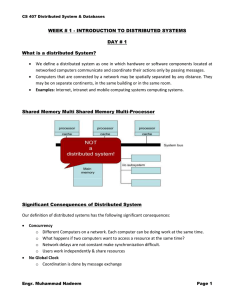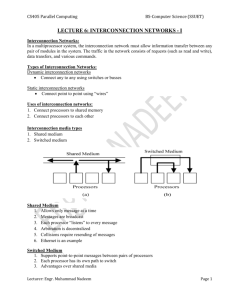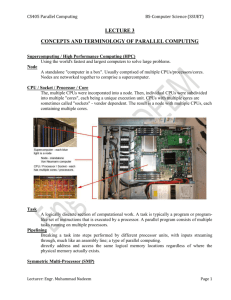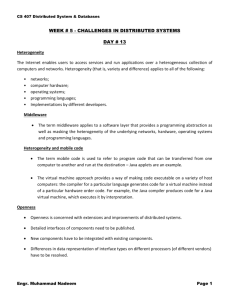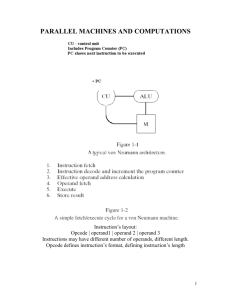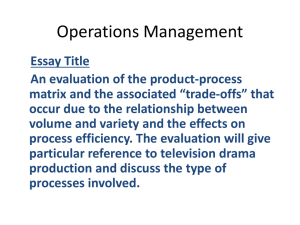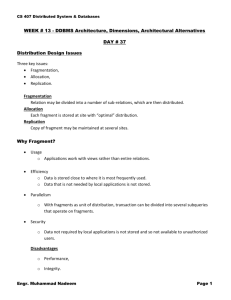Lecture 2 – Parallel Computer Architectures
advertisement
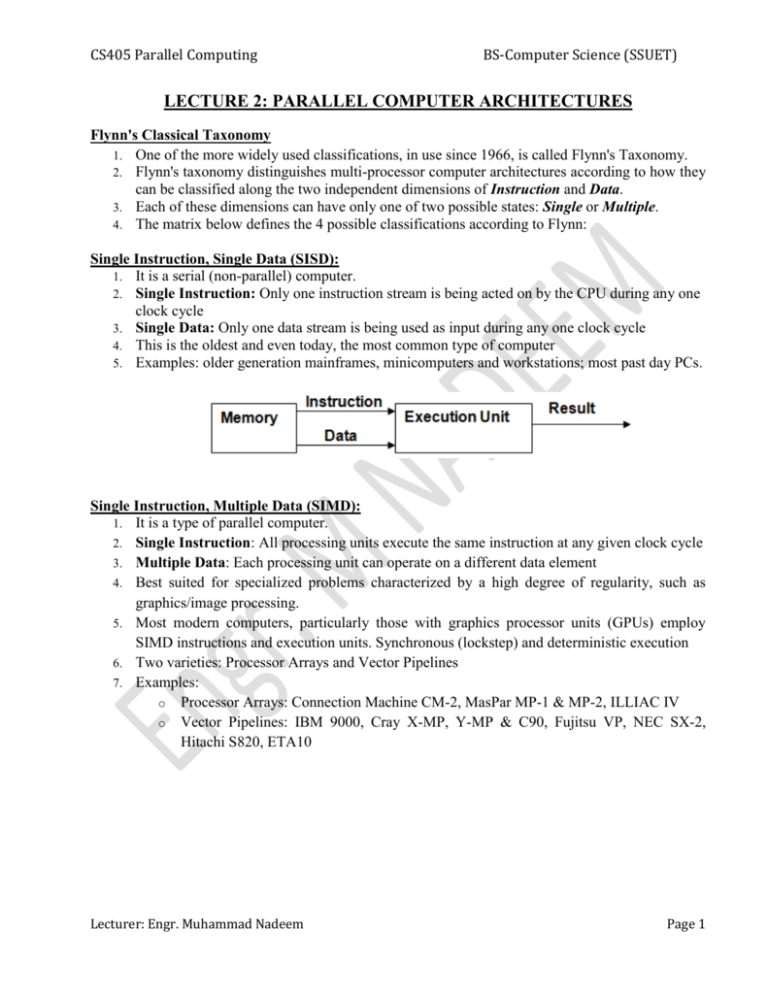
CS405 Parallel Computing BS-Computer Science (SSUET) LECTURE 2: PARALLEL COMPUTER ARCHITECTURES Flynn's Classical Taxonomy 1. One of the more widely used classifications, in use since 1966, is called Flynn's Taxonomy. 2. Flynn's taxonomy distinguishes multi-processor computer architectures according to how they can be classified along the two independent dimensions of Instruction and Data. 3. Each of these dimensions can have only one of two possible states: Single or Multiple. 4. The matrix below defines the 4 possible classifications according to Flynn: Single Instruction, Single Data (SISD): 1. It is a serial (non-parallel) computer. 2. Single Instruction: Only one instruction stream is being acted on by the CPU during any one clock cycle 3. Single Data: Only one data stream is being used as input during any one clock cycle 4. This is the oldest and even today, the most common type of computer 5. Examples: older generation mainframes, minicomputers and workstations; most past day PCs. Single Instruction, Multiple Data (SIMD): 1. It is a type of parallel computer. 2. Single Instruction: All processing units execute the same instruction at any given clock cycle 3. Multiple Data: Each processing unit can operate on a different data element 4. Best suited for specialized problems characterized by a high degree of regularity, such as graphics/image processing. 5. Most modern computers, particularly those with graphics processor units (GPUs) employ SIMD instructions and execution units. Synchronous (lockstep) and deterministic execution 6. Two varieties: Processor Arrays and Vector Pipelines 7. Examples: o Processor Arrays: Connection Machine CM-2, MasPar MP-1 & MP-2, ILLIAC IV o Vector Pipelines: IBM 9000, Cray X-MP, Y-MP & C90, Fujitsu VP, NEC SX-2, Hitachi S820, ETA10 Lecturer: Engr. Muhammad Nadeem Page 1 CS405 Parallel Computing BS-Computer Science (SSUET) Multiple Instruction, Single Data (MISD): 1. 2. 3. 4. 5. It is a type of parallel computer. Multiple Instructions: Each processing unit operates on the data independently via separate instruction streams. Single Data: A single data stream is fed into multiple processing units. Few actual examples of this class of parallel computer have ever existed. One is the experimental Carnegie-Mellon C.mmp computer (1971). Some conceivable uses might be: o Multiple frequency filters operating on a single signal stream o Multiple cryptography algorithms attempting to crack a single coded message. Lecturer: Engr. Muhammad Nadeem Page 2 CS405 Parallel Computing BS-Computer Science (SSUET) Multiple Instruction, Multiple Data (MIMD): A type of parallel computer Multiple Instruction: Every processor may be executing a different instruction stream Multiple Data: Every processor may be working with a different data stream Execution can be synchronous or asynchronous, deterministic or non-deterministic Currently, the most common type of parallel computer - most modern supercomputers fall into this category. 6. Examples: most current supercomputers, networked parallel computer clusters and "grids", multi-processor SMP computers, multi-core PCs. 7. Note: many MIMD architectures also include SIMD execution sub-components 1. 2. 3. 4. 5. Classification for MIMD Computers MIMD Computers are classified into two types: 1. Shared Memory 2. Distributed Memory Lecturer: Engr. Muhammad Nadeem Page 3 CS405 Parallel Computing Lecturer: Engr. Muhammad Nadeem BS-Computer Science (SSUET) Page 4 CS405 Parallel Computing Lecturer: Engr. Muhammad Nadeem BS-Computer Science (SSUET) Page 5
